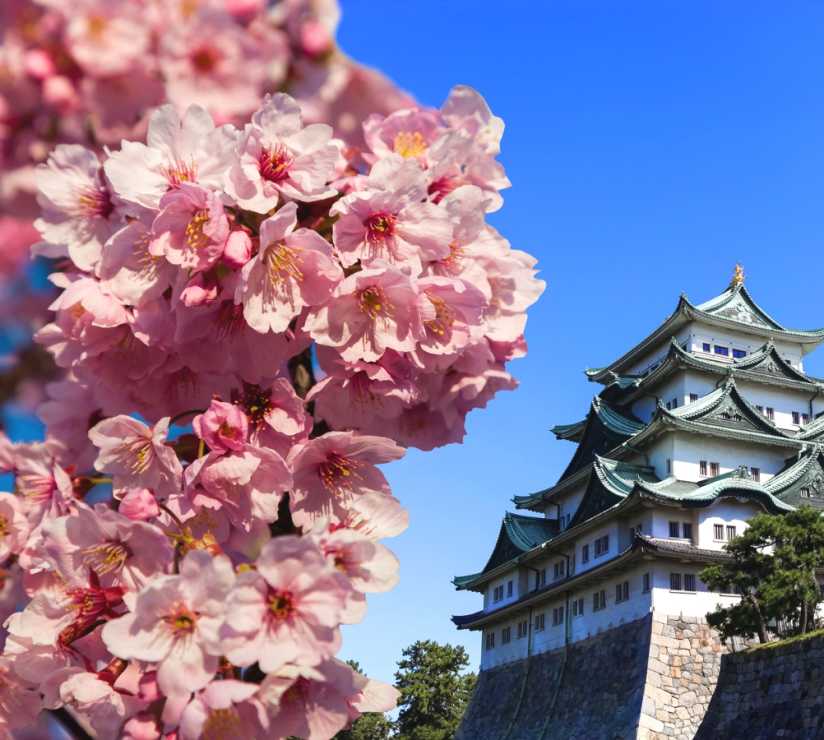
10 Hidden Gems In Nagoya
Edited by Holly Stark
For me, Nagoya is the underappreciated gem of the country, it feels like the Seattle of Japan before grunge took it to a new level. It’s the unknown coupled with the traditional; home to Edo period architecture, incredible culture and, of course, anime. Living in Nagoya means skateboarding and longboarding around, trying new places to eat and exploring. My favorite thing about living in Nagoya is its lesser-known spots, the ones often overlooked by travel guides. In this sense, Nagoya is an endless source of little hidden gems lost in its alleyways, sidestreets, and forgotten corners. It’s like Tokyo's little sister; still growing but retaining a strong connection to the past. Visiting Japan and seeking 10 hidden gems in Nagoya? Be prepared to head Nagoya off the beaten path and peel back the layers of a very interesting place that people don’t often give so much thought to. Looking for an alternative Nagoya guide to get started? You’ve just found it - here are the best unique Nagoya experiences.

Fuji Antarctic Museum
Fuji Antarctic Museum
Photo Credit:Gnsin, Wikipedia
Docked in the Port of Nagoya you can find the disguised Fuji Antarctic Museum. Once used as an icebreaker ship from 1965 until 1983, it has now been turned into a museum for the public. One of the more unique Nagoya experiences, at Fuji Antarctic Museum, you can head back in time and discover the lives and jobs of the boatmen inside the ship. Preserved to appear just like it did during its prime, the exhibition was completely renovated in 2017, and now has the theme of "Discovering the Achievements of Fuji and Charms of the Antarctic." With a dramatic film that is displayed on four big screens, you can feel like you're aboard the ship as it endures a storm, sails forward, and crushes ice as it goes. If interactive experiences, Japanese history, and maritime museums are your thing, be sure to check out the Fuji Antarctic Museum; one of the top 10 hidden gems in Nagoya.

Shirotori Garden
Shirotori Garden
Photo credit: Tomio344456, Wikipedia
One of the best natural Nagoya secret spots, the Shirotori Garden is the perfect place to take a break from the city hype. In spring during sakura season, you can experience different types of beautiful cherry blossom, including the beni-shidare-zakura and mountain cherry, flowering side-by-side, while in autumn the vibrant fall foliage is simply dazzling. Enjoy a peaceful walk around the leafy gardens, feed the koi carp, sip a green tea or treat your tastebuds to a shaved ice cream at the Japanese teahouse. Admire the unusual yukitsuri geographical structures; a sort of traditional anti-snow measure with ropes stretching down radially from the tops of trees to form beautiful cones. Paired with their reflections in a mirror of water, they create an extremely relaxing scene. Based on the Chubu area, with the river representing the Kiso River, the Tsukiyama hill representing Mt. Ontake and the pond representing the Ise Bay, the stunning scenery of the Shirotori Garden park is beautiful whatever the weather and is not to be missed for any nature lover.

Nagoya Port Night Factory Cruise
Nagoya Port Night Factory Cruise
Fancy sightseeing after dark for an alternative Nagoya experience? This Nagoya Port Night Factory Cruise is a little out of the ordinary. The Kohjo Yakei Cruise is a nighttime factory cruise that focuses on the vast industrial zone surrounding the port of Nagoya, which is Japan’s biggest trading port. If industry and mercantile sightseeing is your thing or you’re simply intrigued by a nighttime cruise, you’re sure to not be disappointed. Perhaps surprisingly, the beauty of this industrial area, with its towering steel castles, gleaming metallic labyrinths, and colorful flames, is undeniable and rarely seen by visitors to the city. Japan’s locals used to go out of their way to avoid the country’s sprawling man-made zones, but now they’ve been reinvented as attractions due to their unique, unearthly beauty. Seeking things to do in Nagoya at night? Don’t miss this one of a kind experience.
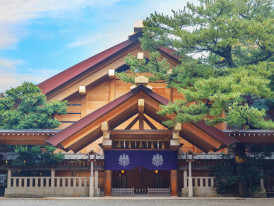
Atsuta Shrine
Atsuta Shrine
Hidden away inside a beautiful woodland area, making it feel like you've traded the city for more tranquil surroundings is Atsuta Shrine; a Shinto shrine. Shinto is the original, spiritual practice, indigenous to Japan; a collection of traditional Japanese beliefs which promote the preservation of the environment and nature, the wisdom of how to live in harmony with the natural world, while being respectful of all the spirits of life (Animism), found in rocks, mountains, trees and streams. Atsuta enshrines the Sun Goddess Amaterasu and stores the sacred sword Kusanagi. Tucked away in the woods, Atsuta Shrine is one of the most beautiful hidden places in Nagoya. While visiting, wash your hands with the Chozuya water basin and ladle, fill the ladle and pour it onto each hand, then hold the ladle vertically, allowing the leftover water to also wash the handle. If you are unsure of how to do it, simply watch other visitors. If you want to pray and pay your respects, toss a coin into the box, bow twice, clap twice, make your wish, and then bow once more.
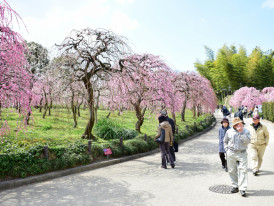
Nagoya Agricultural Centre
Nagoya Agricultural Centre
Photo credit :Bariston, Wikipedia
Nagoya Agricultural Center is a large, free, city-operated public gardens in the east of the city; known for its plum blossoms in late February and mid-March. The city has urban agriculture at its heart and in its attempt to promote this, the Nagoya Agricultural Center was born. Learn about all things agriculture and even get a hands-on experience of some of it. A serene place with lots of greenery, the spot makes a good retreat for relaxation away from the city buzz. Check out the café, organic vegetable shops, streams, glasshouses and even find a small model of a farm with cows, chickens, pigs, goats, and sheep. Maybe you can pack a picnic for the family and soak up the vibe of the Nagoya Agricultural Center; a top Nagoya secret spot.
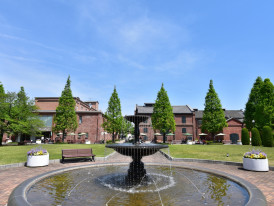
Noritake Garden
Noritake Garden
Photo credit: Bariston, Wikipedia
Head to the peaceful Noritake Garden; just a 15 minute walk north of Nagoya Station. Home to lush greenery, you can tour a pottery and ceramics factory and a museum displaying the Noritake of the old Japan, as well as paint on some patterns for yourself. Check out the delicate creation process of porcelain, or try it yourself in a workshop, while enjoying the serene Japanese garden surroundings. Maybe you can even lay out a blanket and enjoy a picnic with the family. A secret urban oasis and Nagoya hidden gem, at Noritake Garden you can also enjoy shopping for dishes and other tableware in the Noritake-operated store. There is also a restaurant and cafe, where you can enjoy green tea; perfect for taking a break between shopping and strolling the grounds.
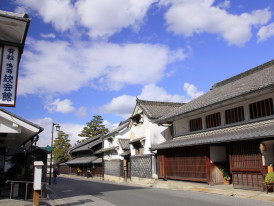
Arimatsu
Arimatsu
Photo credit: Tomio344456, Wikipedia
A suburb of Nagoya on the city’s southeastern edge, Arimatsu is a small village from the days of the shogun, on the old Tokaido Highway. Though the little town was absorbed into Nagoya, it still holds onto its historic core, with many beautiful buildings from the Edo Period and a local population of 2500. The locals made a living producing shibori which is a tie-dyed cotton cloth; which they then sold on as towels passing travelers. Visit the small museum which pays homage to the meticulous tie-dying process. With over 100 possible patterns, one single kimono requires between 50,000 and 200,000 handmade stitches and takes around 4 to 6 months to complete. The lengthy process of Arimatsu tie-dying is a real crafty process which requires engraving a pattern, transferring the pattern to the cloth, tying the cloth, dying it, and then taking the stitches out. In the village, you can see women hand practicing their incredible trade and browse the items in a small shop. At Nagoya’s secret spot, if you want, you can experience tying items yourself and your crafts will be tie-dyed later and sent to you.
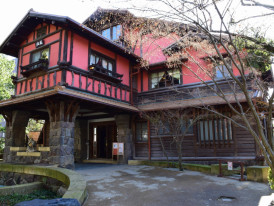
Yōki-sō
Yōki-sō
Photo credit: Bariston, Wikipedia
A hidden Japanese villa and gardens located in Chikusa-ku, close to Nittai-ji temple, Yōki-sō was constructed in the Taishō era for Itō Suketami (1878-1940), the first president of Matsuzakaya. The bangaro was designed by Teiji Suzuki for Itō Suketami as his cottage. Head upstairs to see the traditional Japanese tea ceremony room that was originally from the Tokugawa lords of the Owari Domain. The checkerboard pattern on the wall is called ichimazu and can also be found on the brick chimney outside. Architect lovers and those interested in the rich Japanese culture and history will be sure to appreciate this secret gem of a building; where you can witness a harmonious blend of Japanese and western architecture from the late 1800s. Closeby to the popular Nittai-ji temple, Yōki-sō villa is also home to Hakuun Bridge, sanshotei and the peaceful North Garden abundant in majestic trees. After seeing these, team your visit with a trip to the nearby Nittai-ji temple and gardens.

Nagoya City Archives
Nagoya City Archives
Photo credit: Cfktj1596, Wikipedia
A national cultural asset, home to one of Japan's best and most beautiful stained-glass windows, a reproduced courtroom under the old Constitution, a restored conference hall, a prisoner detention cell that was actually once used and a commemorative exhibit from the Expo 2005 Aichi. There’s a lot going on at the City Archives! Nagoya City Archives are a great spot to check out if you’re seeking things to do in Nagoya beyond the main attractions. The brick building, with its neo-baroque architecture, was built in 1922 and used as a courthouse until 1979. Marvel at the central marble staircase and Taisho-period tastes under the Meiji Constitution. A good place to feel the history and vibe of Nagoya way back in the day, Nagoya City Archives are worth stopping by.

The Cultural Path
The Cultural Path
Photo credit : Junich, Wikipedia
Stretching from Nagoya Castle to Tokugawaen is Nagoya’s Cultural Path; an area with a variety of great historical assets, including buildings that trace the tale of Nagoya’s path to modernization from the Edo period to the Meiji and Taishō periods, such as the Futaba Museum. A fascinating route for getting a glimpse at the development of Japan, on the Cultural Path you can see people in Taishō period-themed kimono and hakama, accompanied by live bands. Along the way you will find the Cultural Path Shumokukan; a former residence of ceramics exporter Tamesaburo Imoto. A secret oasis of calm situated in the corner of the busy urban city, the building emanates the memories of the times it has seen since the Taisho era. With bright and colorful layers of light filling the Western-Japanese fusion style building, it’s a great place to take refuge on your walk. An alternative Nagoya experience, pause in the charming Cultural Path Shumokukan gardens which boast natural beauty through each of Japan’s changing seasons.
